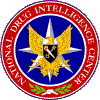
|
National Drug
Intelligence Center
Milwaukee High Intensity Drug Trafficking Area
Drug Market Analysis
April 2007
Strategic Drug Threat Developments
- The heroin abuser population in Milwaukee, which had been limited to
small networks of inner-city residents, has changed. Caucasian males and
females from suburban areas and smaller outlying towns are coming to
Milwaukee in increasing numbers to purchase heroin for personal use or
to sell to friends and acquaintances. In addition, the mean age of
heroin users has decreased; abusers now include senior high school age
youth.
- Canada-based Vietnamese criminal groups have increased their
transportation of high-potency marijuana into Milwaukee, primarily
through Detroit, Michigan, increasing the availability of the drug in
the region.
- Traffickers use Milwaukee as a transit location for khat shipments
that originate in England, France, Germany, and Italy, destined for
Minneapolis, Minnesota.
- Sixty Latin Kings members were indicted in 2006, severely disrupting
the criminal activities of the street gang; however, other members are
poised to take over drug markets vacated by the indicted members.
- Violent crime in Milwaukee has increased overall, and street
gang-related violence, particularly involving firearms, continues to
increase.
- Traffickers are increasingly investing illicit drug proceeds in
Milwaukee real estate ventures.
|
Drug Trafficking
Organizations, Criminal Groups, and Gangs
Drug trafficking organizations are complex
organizations with highly defined command-and-control structures
that produce, transport, and/or distribute large quantities
of one or more illicit drugs.
Criminal groups operating in the United States are
numerous and range from small to moderately sized, loosely
knit groups that distribute one or more drugs at the retail
and midlevels.
Gangs are defined by the National Alliance of Gang
Investigators' Associations as groups or associations of
three or more persons with a common identifying sign,
symbol, or name, the members of which individually or
collectively engage in criminal activity that creates an
atmosphere of fear and intimidation. |
To Top
To Contents
The Milwaukee HIDTA region includes Milwaukee County as well as the
counties of Kenosha, Racine, and Waukesha and occupies the southeastern
corner of Wisconsin, bordering Illinois and Lake Michigan. Most of the
region's population is located in the county and city of Milwaukee, a
fact that is reflected in both the focus of HIDTA efforts and the scope
of this report. Milwaukee is the twenty-second most populous city in the
United States. It lies 90 miles north of Chicago, Illinois, a major
transportation center, making Milwaukee an easily accessible destination
for illicit drugs as well as a transshipment point for drug shipments
destined for drug markets throughout Wisconsin and nearby states.
Ethnically and racially distinct neighborhoods in the city of
Milwaukee are home to Hispanic, African American, and Asian gangs that
provide a nexus between major drug distributors and street-level drug
markets. Hispanics, consisting primarily of first- and second-generation
Mexicans and including persons of Dominican, Colombian, and Puerto Rican
descent, live almost exclusively south of Interstate 94/794 in Milwaukee
County. Most African Americans live north of I-94/794, where they
compose more than 80 percent of the population. Hispanic and African
American gangs in these areas prey upon the residents of local
neighborhoods as they conduct their drug distribution activities and
recruit members.
To Top
To Contents
To Next Page
To Publications Page
To
Home Page
|
![]() To Contents
To Next Page
To Publications Page
To
Home Page
To Contents
To Next Page
To Publications Page
To
Home Page